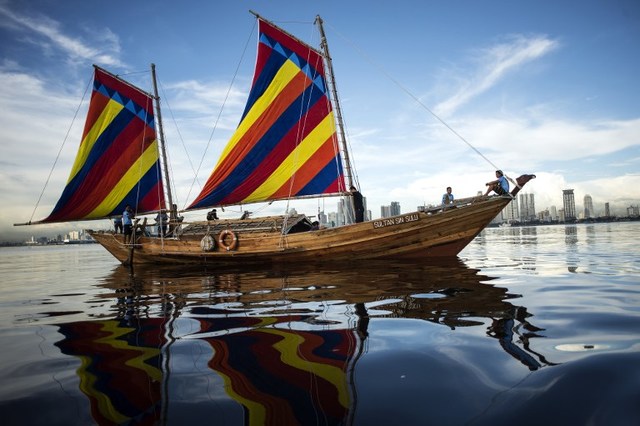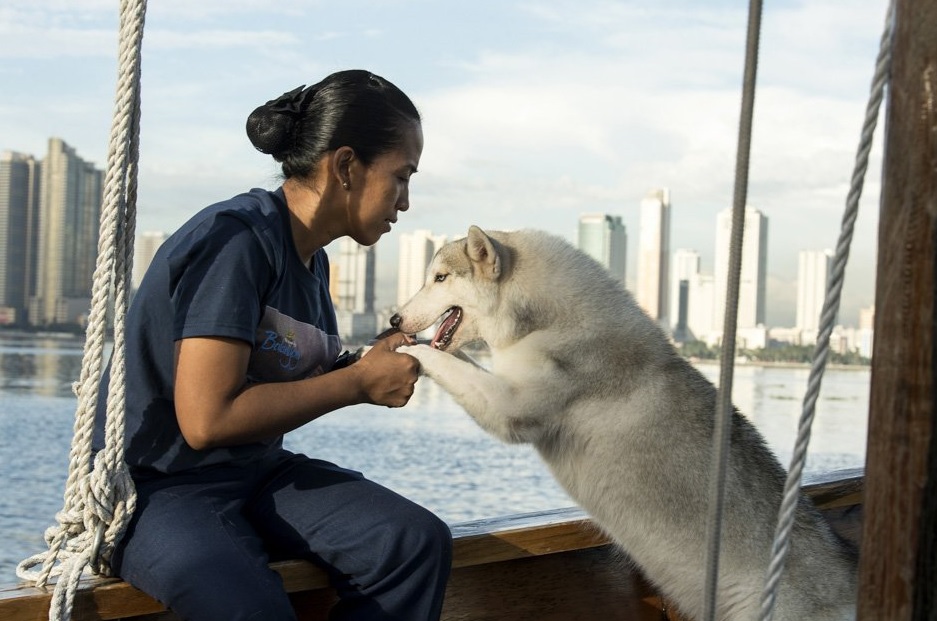
/ AFP PHOTO / NOEL CELIS /
Philippine adventurer Carina Dayondon is no stranger to adversity. She, along with two other Pinays conquered Everest in 2007, the first Filipino women to ever summit the world’s highest mountain.
But Dayondon is undertaking a new challenge: sailing to China in a replica balangay early next year, hoping to recreate trade and navigation voyages made by her ancestors before the country was colonized by Spain in the 1500s.
“People tell me I am crazy. They ask: ‘Wow, why climb Mount Everest? Why go to China on this tiny thing,'” Dayondon told AFP in Manila Bay aboard one of the two boats that will make the expected six-day sailing journey.
“I’m excited because our team will be more inspired realizing how good our forefathers were. We have to let people know we should be proud of being Filipino,” the 39-year-old added.
The balangay she will be using is an 18-meter by 3-meter wide wooden boat that’s known as the oldest watercraft found in the Philippines. Balangays were used extensively by Filipinos during the pre-colonial period, and was instrumental in establishing ancient trade routes with nearby countries like China.

Tribal boat-builders from the southern Philippines, where the boats originated, have made the replicas of the balangay using skills passed on down the generations.
Dayondon hopes to travel in the balangay along with her crew to the Chinese city of Quanzhou, which is 1,000 kilometers away, with as little modern technical help as possible. Of course, traditional sailing during modern times has its share of dangers.
Arturo Valdez, who led their Everest support team, is heading the sailing mission. He’s well aware of the dangers that Dayondon face when she sets out in the open sea.
“We have no night-sailing capability so we can be run over by a super tanker. That’s my fear. The greatest difficulty of replicating an ancient voyage is modernity because there are new port protocols,” Valdez said.
“This kind of boat is being treated as a maritime hazard,” he added.
Living and sailing inside such a primitive ship is also not a cakewalk. “We sleep anywhere because we don’t have quarters. We have no toilet. We just hold the rope and use a harness and do the proper position so we don’t fall,” she said.
Their trip is planned to commemorate a journey made about 600 years ago by a sultan from the southern island of Sulu who went to China to pay tribute to Ming Dynasty rulers there but who but died of an illness on his way home.
The voyage to China will be the team’s second maritime quest following a 17-month journey that began in 2009 around Southeast Asia.
But despite all of the rigorous physical challenges that her team will face when she sets out, the biggest hurdle is in dry land: finding enough money to fund their endeavor.
The team members plan to open the vessels to the public for educational tours and even wedding shoots to raise money for their upkeep in Manila Bay.
Valdez, who also shepherded the first Philippine men up Mount Everest in 2006, said he hoped the government would financially back such feats but they had not.
“Filipinos love us when we climb Mount Everest, love us with our exploits but they are not willing to pay for that. And that makes us a poorer nation,” he said.
“Blazing a trail and going beyond what is normal, that is the spirit of a nation. That is how you build a nation, out of a dream.”










